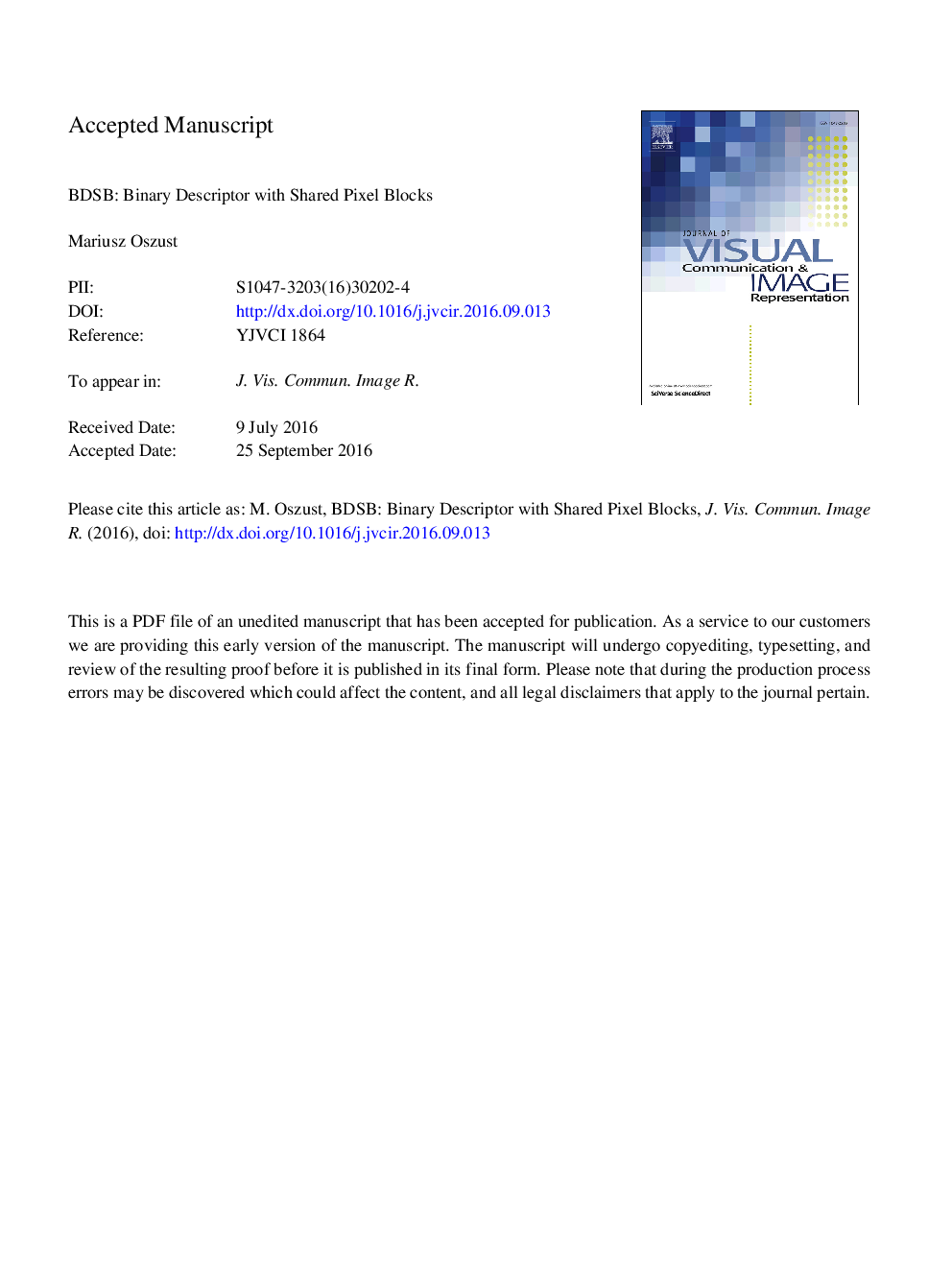| Article ID | Journal | Published Year | Pages | File Type |
|---|---|---|---|---|
| 4969423 | Journal of Visual Communication and Image Representation | 2016 | 32 Pages |
Abstract
The recent growth of multimedia content used in daily-life communication requires the development of image description techniques able to unequivocally identify observed objects, despite image transformations, demanding lighting conditions, or noise. This paper focuses on binary feature descriptors which are often used for this purpose. They have smaller memory footprint, and are faster to compute and match than their floating-point counterparts. Hand-crafted binary descriptors use an image patch around the detected keypoint and divide it into disjoint regions, or select pixels according to a sampling scheme. In this paper, an approach to binary, rotation and scale invariant descriptor is proposed. In the descriptor, a small number of scale-dependent patches are divided into overlapping blocks of pixels, and then binary tests are performed on blocks' intensities and gradients. The extensive experimental evaluation of the approach on seven image benchmarks reveals that it outperforms compared state-of-the-art techniques.
Related Topics
Physical Sciences and Engineering
Computer Science
Computer Vision and Pattern Recognition
Authors
Mariusz Oszust,
